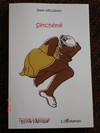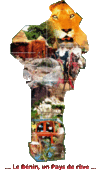The cranium of the juvenile skeleton of Australopithecus sediba.
One August day in 2008, a pair of nine-year-old boys crossed paths at a cave in South Africa. The boys didn't play, didn't speak, didn't even smile at each other. One of them was Matthew Berger, the young son of paleoanthropologist Lee Berger of the University of Witwatersrand in Johannesburg, accompanying his dad into the field for an expedition. The other boy was known only as Australopithecus sediba, a pre-human child who died 1.977 million years ago, leaving only his fossilized bones behind.
The site, 30 miles northwest of Johannesburg, had been visited before and other bones had been found, but the remains Matthew stumbled across, along with those of an adult female, are the subject of no fewer than five papers in this week's issue of the journal Science — and with good reason. The skeletons are both in remarkably good condition: a hand and a pelvis are the most complete for a hominin ever found; the ankle bones and one of the skulls are nearly as pristine. Feet, hands and heads are where walking, tool-making and thinking reside — the very features that most conspicuously separate us from the apes — and the flock of new papers show that Australopithecus sediba was starting to separate itself indeed. This suggests a whole new transitional species between long-ago pre-humans and modern Homo sapiens.
"Sediba is turning out to be one of the most intriguing hominins ever discovered," says Berger. "It certainly shows a mosaic of features shared by both earlier and later hominins."
Copyright, Blaise APLOGAN, 2010,© Bienvenu sur Babilown
Toute republication de cet article doit en mentionner et l’origine et l’auteur sous peine d’infraction
![]()








Commentaires